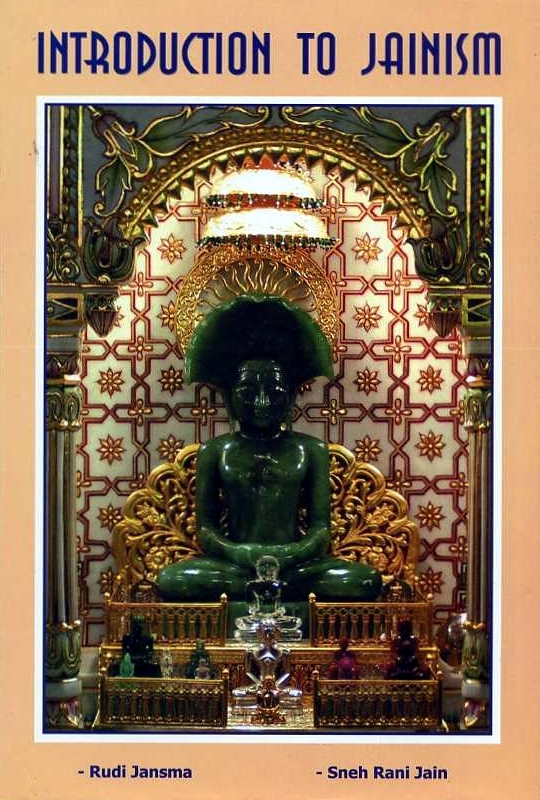The lower worlds as a whole, which together comprise the underworld, have a depth of 7 rajjus[61], i.e. many light-years. The seven bhūmis or earths below Madhyaloka have the shape of seven discs with a space of seven rajjus in between them. Each bhūmi is surrounded by three atmospheres: a coarse air atmosphere, a moist atmosphere and a thin air atmosphere, and the whole is surrounded by ākāśa (space). In a downward direction they become darker, and their colors are described as jewel, sugar, sand, mire, smoke, darkness, and pitch darkness respectively. Beneath all these is a hell, the severest of all, called Nigoda Hell, from which no return is possible.[62] The topmost of the seven bhūmis is 180,000 yojanas[63] thick, and the subsequent ones are far thinner; the ratio of the thickness of the seven is 45, 8, 7, 6, 5, 4 and 2 times 4000 yojanas. The first consists of three layers of 4, 21, and 20 times 4000 yojanas. In the lowest of these three layers the first hell is situated - that is to say, only in the so-called mobile channel (trasi nadi), which has the form of a vertical column. The second to seventh hells are found in the mobile channels of the second to seventh bhūmis. Between each of these bhūmis is one rajju of space. So the thickness of the bhūmis is negligible compared to the distances in between.
In each of the seven bhūmis are layers in which the hells are located, and from the first to the seventh downward these have 13, 11, 9, 7, 5, 3, and 1 layers, totaling 49. The hellish beings, which by definition possessed an independent mental power during their last existence in madhyaloka, “our” world, but misused it, live in enormous cavities within these layers, all of which are located around one central hole for each layer. Altogether the number of these cavities is 8,400,000.
Despite these truly astronomical distances, which even for a celestial god would take at least 3½ years to cross, the soul takes less than the blink of an eye (4 samayas) to cover them, and when arrived at the spot immediately embodies itself. That is because the soul travels the path of the swastika (svāstika). The four bent arms of the swastika symbolize the four gatis or realms where the soul can abide: the human world, or the hellish, heavenly or subhuman (i.e. animal, plant, mineral, etc.) worlds. The core and essence of every being is the center point of the swastika. The soul moves exclusively in a straight line along one of the limbs of the swastika - and a little visualization shows you that it passes three corners at the most, so that it never takes more than four samayas or the blink of an eye for a soul to reach its destination. In crossing from one dimension to another the distances in billions of miles play no role whatsoever. Apparently the fluidic body of a celestial god, which is composed of fluidic matter, even though this matter is more subtle than “our” physical matter, is subject to totally different laws than the substantial, but matterless, soul. This in an interesting idea for elementary particle physicists, field physicists and astronomers (of the coming centuries) who wish to understand the spiritual side of the cosmos in relation to the already known laws of perceptible matter. The soul is not limited by the laws of matter, but by those of the dimensions. However, it is the soul which determines the forms and behavior of matter.
A rajju, literally a rope, is of an order of magnitude comparable with a light-year, and is defined as the distance which is bridged by a god when he flies uninterruptedly through space with a velocity of 2,057,152 yojanas (about 20 million kilometers) per second, i.e. some 60 times the velocity of light. In general the rajju is used as a relative rather than as an absolute measure.
In modern Theosophical literature we find reference to a so-called “eighth sphere” where only those who have abandoned and opposed every spark of higher nature will go. Finally, after many lifetimes of evildoing, the thread between their personal and spiritual souls is broken, and then the personal soul reaches “avichi-nirvāna,” the opposite of nirvāna. But even those are not lost forever. In the next grand cycle of evolution they will have to start all over again. Nothing in the universe is destroyed forever.
 Dr. Sneh Rani Jain
Dr. Sneh Rani Jain
 Publisher:
Publisher: